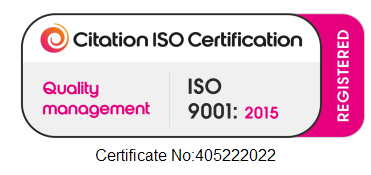Omnichannel and Multichannel. Words often thrown around in the customer service industry, but, what do they mean? To cut to the point, it means providing exceptional customer service and ensuring your business is communicating with customers in a way that works for them. Whether that’s via social media, WhatsApp, email, live/bot chat, or the often preferred method of communication for many consumers, the telephone.
Omnichannel pushes past the operational tactics of multichannel into a business model that weaves those channels together and shares data between them, enabling customers to conduct business with companies however they want, wherever they want.
For example, if a customer has started an interaction with a company on webchat submits information, such as an account number, then decides to end that chat and call customer service instead, that information can be transferred to an agent. A business with strictly multichannel capabilities can accommodate the customer on both channels, but because it lacks back-end systems integration, the customer would have to re-enter the information using an automated system, such as interactive voice response, or relay it to a live agent.
So why is an omnichannel approach vital to your businesses success?
Throughout modern history, the rollout of increasingly sophisticated technologies has meant businesses can now progressively profile customers, and deliver a consistent omnichannel experience. Businesses today have become too reliant on technology; a study by Forbes argues that for consumers it can often feel like businesses are “hiding behind bad customer service technology” and that there too often is no human available when only a human can help. A study by Accenture of over 25,000 consumers found that businesses have “lost sight of the importance of human interaction and often make it too difficult for consumers to get the right level of help and service they need”. The impact? Businesses in the US are losing $1.6 trillion due to bad customer experiences.
Why have businesses begun to move away from traditional contact methods?
There is a multitude of reasons as to why businesses have shied away from more traditional contact methods;
- In-house contact centres are several times more expensive to operate;
- Contact centres need many more agents to answer customers’ requests when compared to email or LiveChat
- In-house contact centres can be difficult to scale up when a business grows;
- LiveChat is the preferred communication method for the younger demographic.
Notice a common theme? There is more focus on the businesses needs and requirements than that of the customers. It is vital in the global world that businesses can remain competitive with the likes of Apple and Amazon (two industry leaders in customer satisfaction).
Why is this so important to your business?
A 2016 report by NICE predicted that by 2025 consumers “will have zero tolerance for sub-optimal service, as they will be even more informed about the reality of service, have far higher expectations, be empowered by social sharing, and be more willing and able to shift suppliers”. This report also found that due to shifting consumer perceptions of service performance, great customer service will commoditise, making it increasingly difficult to differentiate and delight customers.
More recently, in 2020 an article by McKinsey & Company argued that the pandemic has forced a rethinking of what customer care means; in a post-pandemic world, the best ways to improve customer experience and efficiency will be “to increase digital self-service and to make smarter trade-offs, grounded in what matters to customers.
Forrester research and advisory online, predicts customers will still in the future choose to make a phone call to a real person, despite the resurgence in the Internet of Things (IoT), such as Amazon’s Alexa. For example, for tasks such as account closure, booking complex airline tickets or asking for their creative input, artificial technology (AI) still needs decades of development to match a human touch.
How can you drive continuous improvement in response to consumers' changing needs?
In this article, we have detailed the pressures contact centres face from consumers, how they have adapted and how they can further evolve in the future. But what can businesses do to ensure they are on track to meet these changing needs?
At BDM Talk, we pride ourselves in driving continuous improvement with our outsourced call centre solutions and recommend that your contact centre should gather customer insight, through feedback surveys, identify SMART goals and implement a ‘plan, do, check act’ process.
Customer surveys via email, live chat, social media polls, and of course, telephone, to gather feedback on your call centre strategy will allow you to identify gaps in service quality, performance degradation over time and benchmark your customer experience against your competition.
Deciding whether to outsource your customer service operations
Outsourcing call centre operations is a big commitment on the part of the client, and the business process outsourcer (BPO) who specialises in contact centre solutions. Typically companies will need to be handling a minimum of 50 inbound or outbound calls daily for it to make financial sense to work with the client, due to economies of scale.
When a client outsources customer service they only pay for the time the calls are being managed. This can be considerably cheaper than employing staff full-time, along with all other associated costs.
Furthermore, working with an outsourced contact centre means you will be leveraging specialists who have exposure and diversification across many industries.
How BDM Talk can help you enhance your customer experience
At BDM Talk, we help businesses in a wide range of sectors, including automotive, healthcare and online retail, outsource some or all of their contact centre. Providing initial and ongoing strategic consultancy around the customer journey, technology and integration, BDM Talk helps companies save time, allowing them to better focus on running and developing their business.
Perfect for businesses who want to improve their customer’s experience, BDM Talk offers a truly omnichannel approach to customer service. Utilising our contact centre software, it allows our agents to move between channels and touchpoints easily so they can seamlessly help customers regardless of the channel. Meaning we can communicate with your customers in a way that works for them.
Get in touch today with one of our friendly experts and get a free quote by calling 0330 159 2626, or by following the link below you can arrange a callback.
Customer contact with BDM Talk is limitless… innovative… scalable… cost-effective.


